
The [Simpler] Tetrode Spinner
We wanted a simpler, off-the-shelf tetrode twister that could be bought, built, and assembled by anyone. We took some tips from the “big brother” Twister that was already on Open Ephys, and made a few feature cuts. The simple twister is based on Arduino microcontroller hooked to a stepper motor, and we hope that our parts list helps you build your own semi-automated twister for about $300.
Amazon.com
- [$8.94] Hammond Manufacturing Clear Polycarbonate Enclosure
- [$4.95] Momentary Pushbutton Switch
- [$4.99] 10kOHm Resistors 1/4 Watt (100pcs)
ThorLabs.com
- [1$85.00] Aluminum Breadboard 6″x12″x1/2″ with 1/4″-20 Taps
- [$26.00] Sorbothane Feet 1/4″-20 Thread
- [$10.82] Ø1/2″x12″ Optical Post 1/4″-20 Tap
- [$6.77] Ø1/2″x6″ Optical Post 1/4″-20 Tap
- [$12.64] Ø1/2″x6″ Post Holder, Spring-Loaded Hex-Locking Thumbscrew
- [$9.76] Right-Angle Post Clamp Fixed 90° Adapter
- [$25.70] Slim Right-Angle Bracket with Counterbored & M6 Tapped Holes
- [$9.50] 1/4″-20 Stainless Steel Cap Screw, 1″ Long, Pack of 25
Adafruit.com
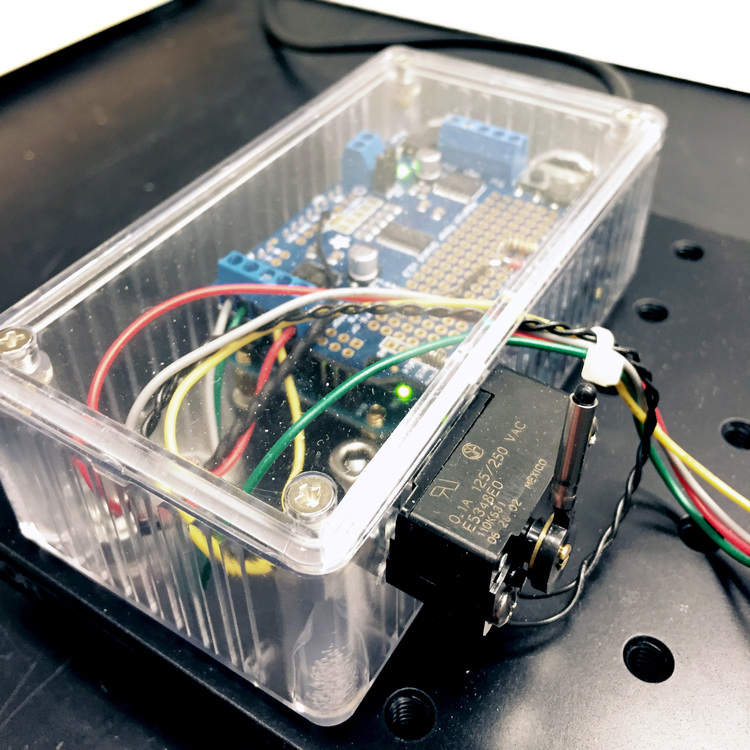
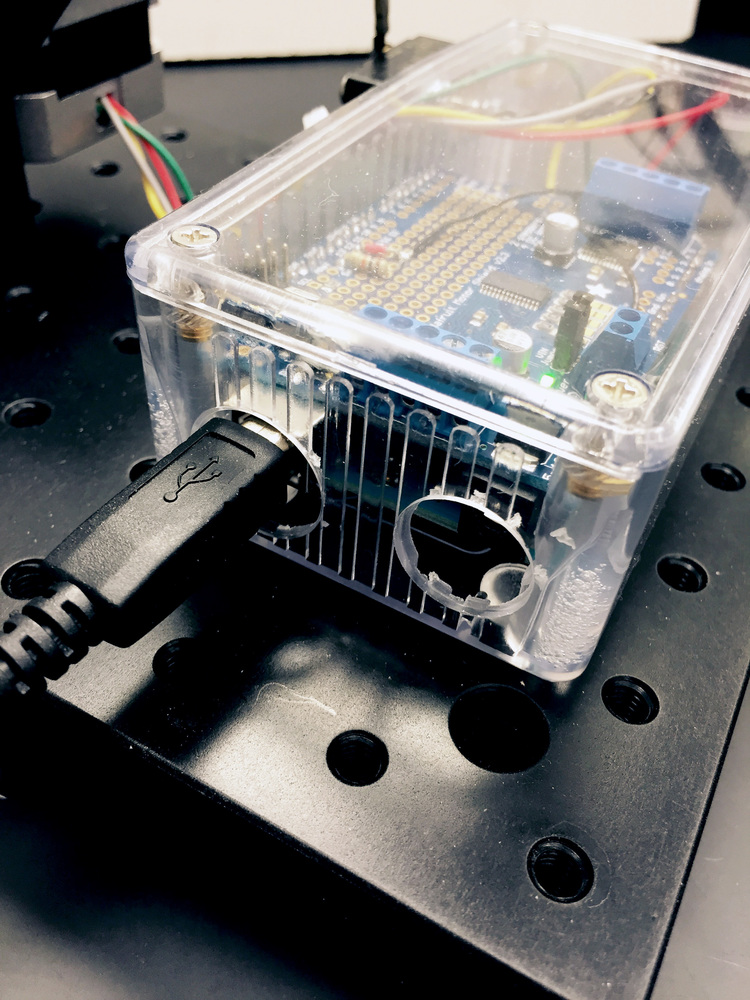
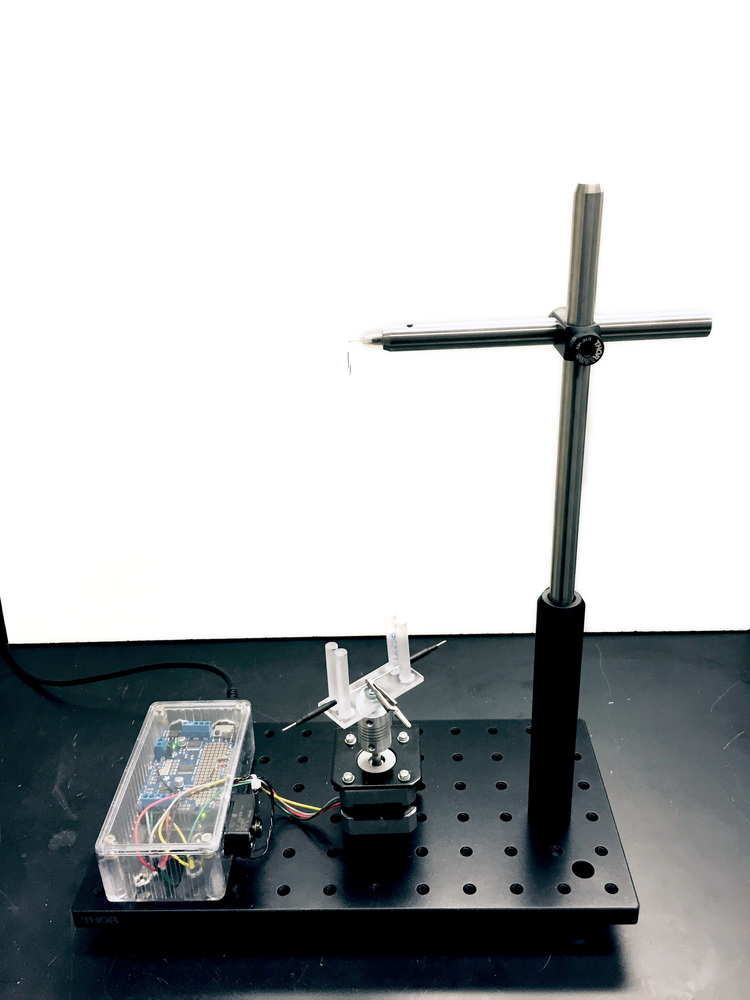
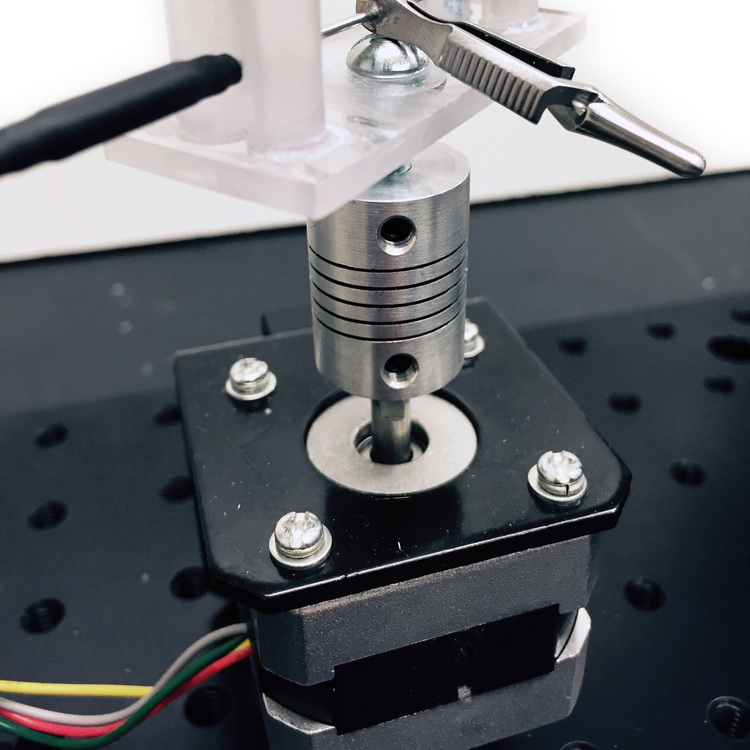
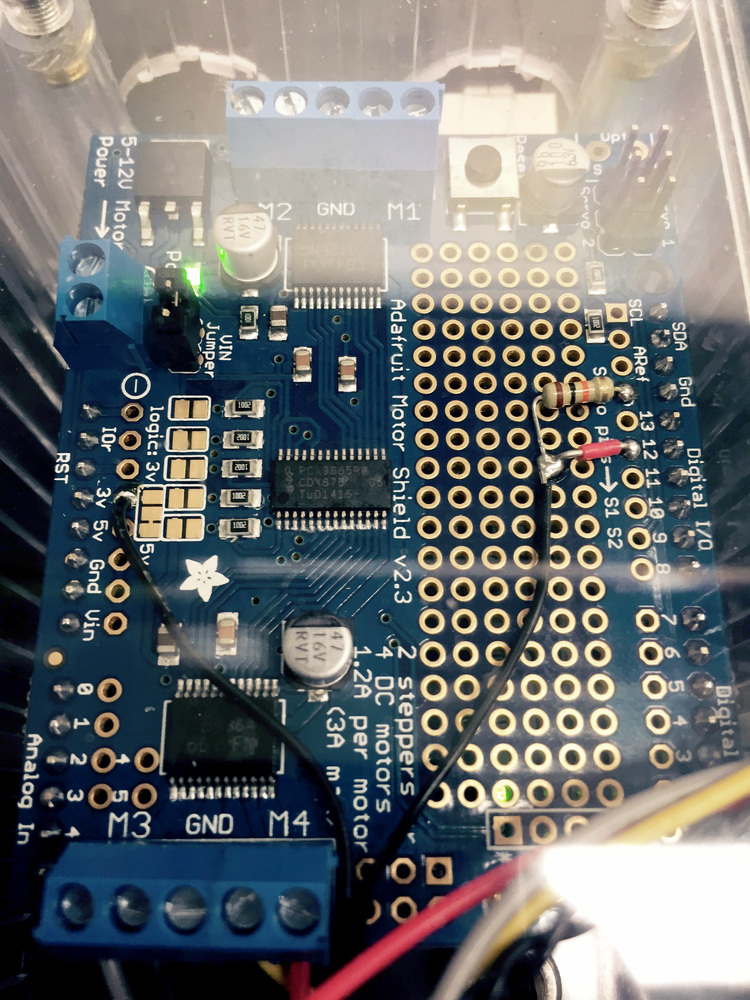
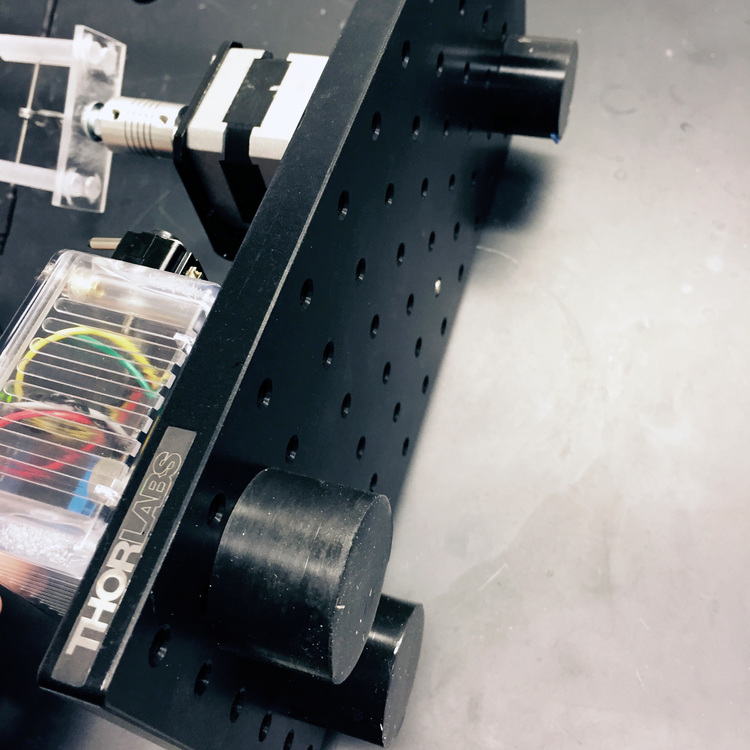
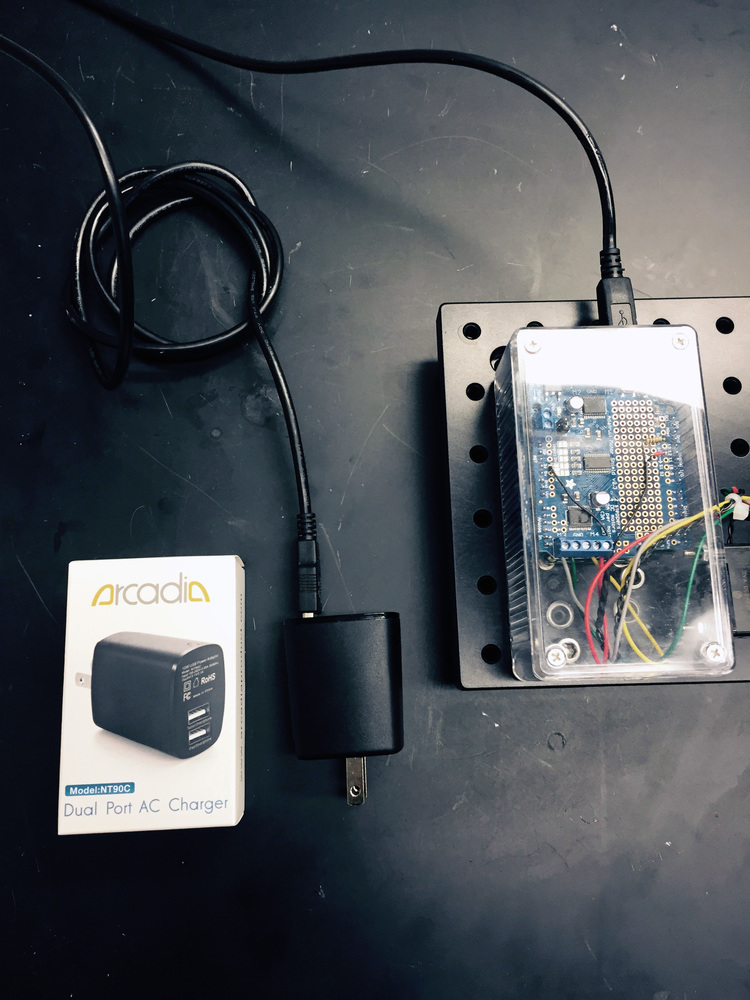
Assembly
You mat need a few other parts, like hookup wire, a small needle, and some standoffs to mount the Arduino, but you might already have those. Let’s get started with the Arduino.
- Head over to Adafruit’s wonderful documentation on how to install the motor shield.
- Install a 10kOhm resistor between IO pin 12 and ground (see photo below), and install one end of the switch directly to pin 12, and the other side to 3.3V+.
- Download the Arduino Software.
- Clone our Tetrode Arduino repository on GitHub (or download the ZIP) and compile it onto the Arduino.
- Test the stepper motor by pressing the switch.
If you get the Arduino to run the stepper motor, all you have left to do is mount the components and stick a bent (and blunted) needle onto the 8/32″ screw of the horizontal Ø1/2″ post. You’ll notice that we are leaving a few things up to you, which may change based on your abilities:
-
We used the right-angle mount from Thor Labs to place the motor, but we had to drill two small holes in the steel motor mount for it to work
-
The momentary switch shown is different than the one recommended in the parts list, it’s all we had lying around and can be found at All Electronics
-
You will need to decide how you wan the tetrode clip to interface with the motor, and you can reference the original Open Ephys Twister for 3D parts, or do what we did, and scrap one together
Usage
The momentary switch will spin the motor 80-turns in one direction, and 20-turns in the other, and then stop. These parameters can be adjusted in the INO file provided in Step 4 (above). We found that the stepper motor introduces a slight vibration into our plastic “goal posts” used to hold the tetrode clamp, although we were able to dampen this using some rubber heat-shrink tubing. It is recommended that you unplug the Arduino from the AC charger when the spinner is not in use.
We hope this serves as a starting point for making your own spinner, and please share any innovations you have made in your quest for the perfect tetrode.
Recent Comments
Archives
- April 2023
- January 2023
- November 2022
- May 2022
- March 2022
- January 2022
- December 2021
- April 2021
- December 2020
- October 2020
- August 2020
- July 2020
- March 2020
- February 2020
- January 2020
- December 2019
- November 2019
- October 2019
- January 2019
- December 2018
- November 2018
- August 2018
- July 2018
- April 2018
- March 2018
- November 2017
- October 2017
- February 2017
- October 2016
- August 2016
- July 2016
- November 2015
- October 2013
- February 2013
- January 2013
- August 2012
- July 2012
- June 2012
- May 2012
- April 2012
- February 2012
- December 2011
